Lately, we’ve been making a lot of breakfast recipes with eggs. Eggs are one of the most nutrient-dense, healthy, and budget-friendly real foods you can eat. Let’s make another easy egg breakfast meal to add to your weekly meal plan: a simple egg and cheese omelette recipe with veggie and ham options.
I’ll guide you through how to make a good cheese omelette, with step-by-step pictures and video. Making an omelette is all about the technique and practice makes perfect, so let’s get cooking.
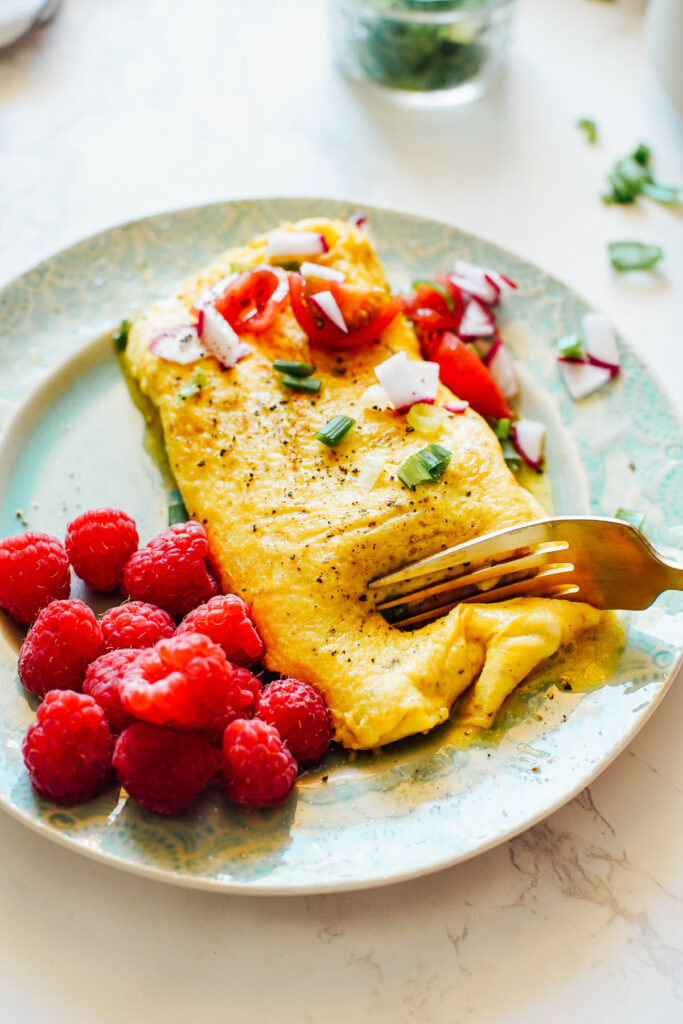
Want to Save This Recipe?
Enter your email & I’ll send it straight to your inbox. And you’ll get new recipes & tips each week.
If you’re anything like me, making an omelette at home has felt intimidating in the past. This breakfast dish feels so fussy compared to something like scrambled eggs or sunny side up eggs, or even eggs in a basket.
For years, after making the switch to real food and wanting to incorporate more eggs into our diet (there are over 16 different egg styles or cooking techniques), I tried making omelettes with less than desirable results.
So, instead, I took the easy road and made make-ahead omelette muffins. And turned my attention to perfecting other ways of cooking eggs.
Once I perfected scrambled eggs, I turned my attention again to the classic omelette, using a similar technique as scrambled eggs: butter and low heat.
The end result was incredible!!
Each time I made an omelette this way, I got better and better. Practice truly makes perfect. Now, I’m pretty darn proud of my omelette making skill and we enjoy a simple cheese omelette for breakfast at least once a week.
Ingredients
To make the best basic egg and cheese omelette, you’ll need just a few ingredients.
4 Simple Ingredients
You can customize this basic omelette recipe to your liking. Add veggies (like tomatoes, mushrooms, onions, bell pepper, potatoes, avocado, etc.) and/or ham, cooked ground sausage, cooked ground chorizo, or cooked chopped bacon.
For a classic American omelette, I suggest cheddar cheese (a sharp cheddar is my preference for flavor, like Kerrygold Reserve Cheddar that I buy at Costco), but there are many other cheese options. We’ll talk about cheese options later in this article.
How to Make a Cheese Omelette Step-By-Step
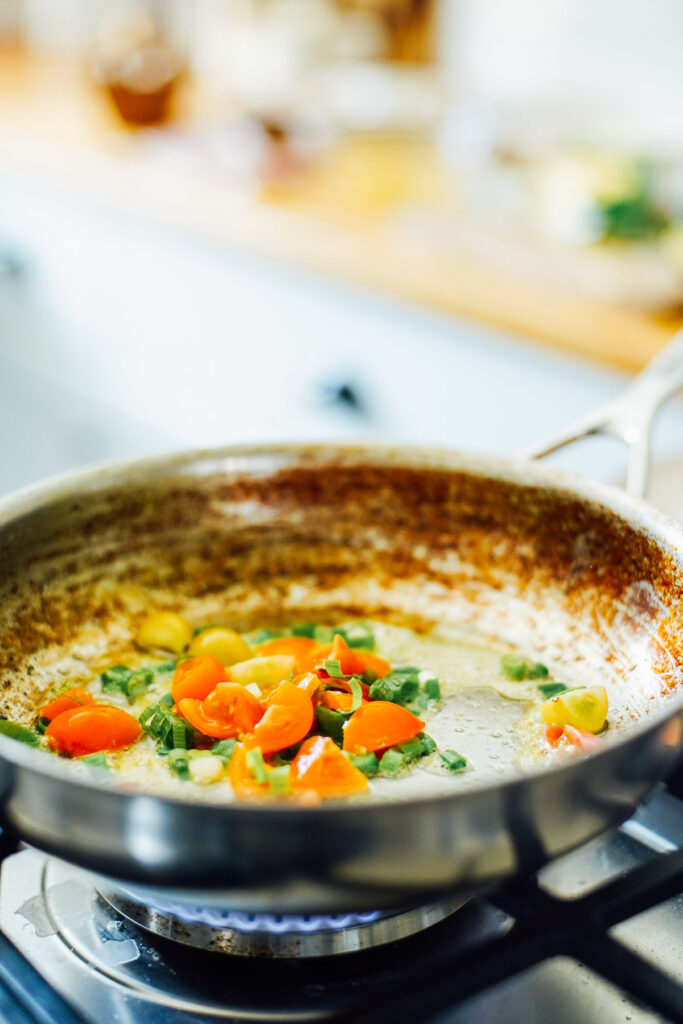
- Chop or dice whatever vegetables you’ll be using. A few options: bell pepper, green onions, red or yellow onions, cherry tomatoes, mushrooms, chopped potatoes, or kale. Baby spinach is also an option that doesn’t need to be chopped. You may add a clove of garlic (minced) with whatever veggies you cook for extra flavor. And an avocado (sliced or chopped) is also an option, but this option doesn’t need to be cooked first.
- Add 1 teaspoon of oil (avocado oil or extra virgin olive oil) to a 9 or 10-inch skillet.
- Add the veggies and a pinch of salt.
- Saute the veggies for about 2-3 minutes. This softens the veggies, making them perfect for an omelette filling.
- Once softened, set aside on a plate.
If you’re adding potatoes (1/2 a Yukon Gold or red potato is best), you’ll need a bit more oil and a few extra minutes of cook time for the hard potatoes to cook. I suggest dicing the potatoes, so the chunks are small and cook quickly.
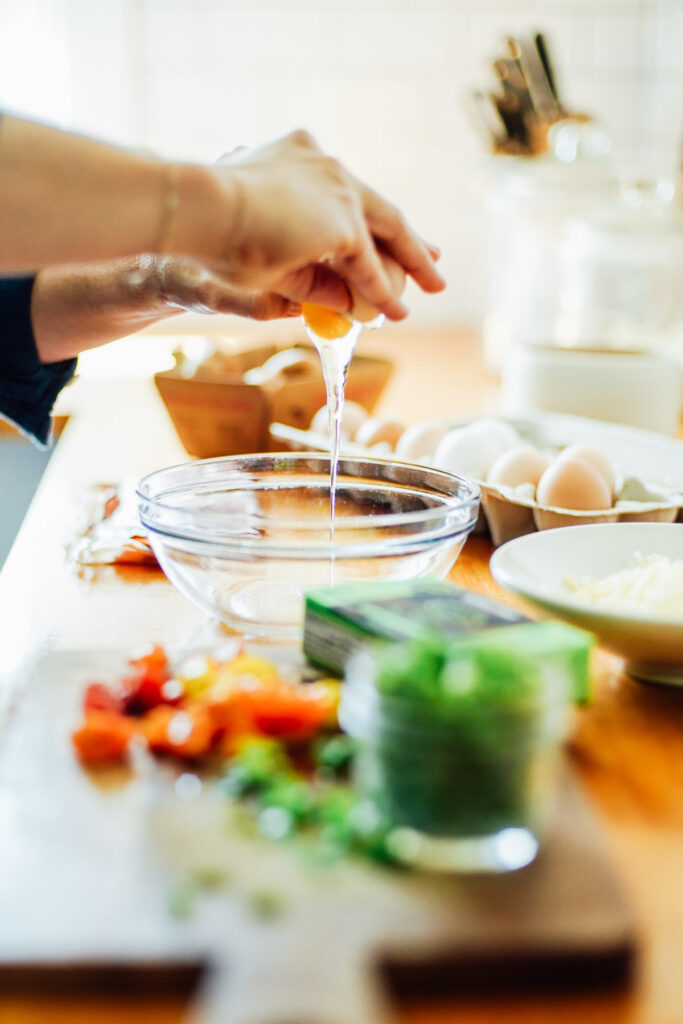
Step 1: Crack 2 Eggs
Crack 2 eggs in a medium-size bowl. Add a pinch or two of salt and a couple turns of the pepper grinder (a pinch or two of ground pepper).
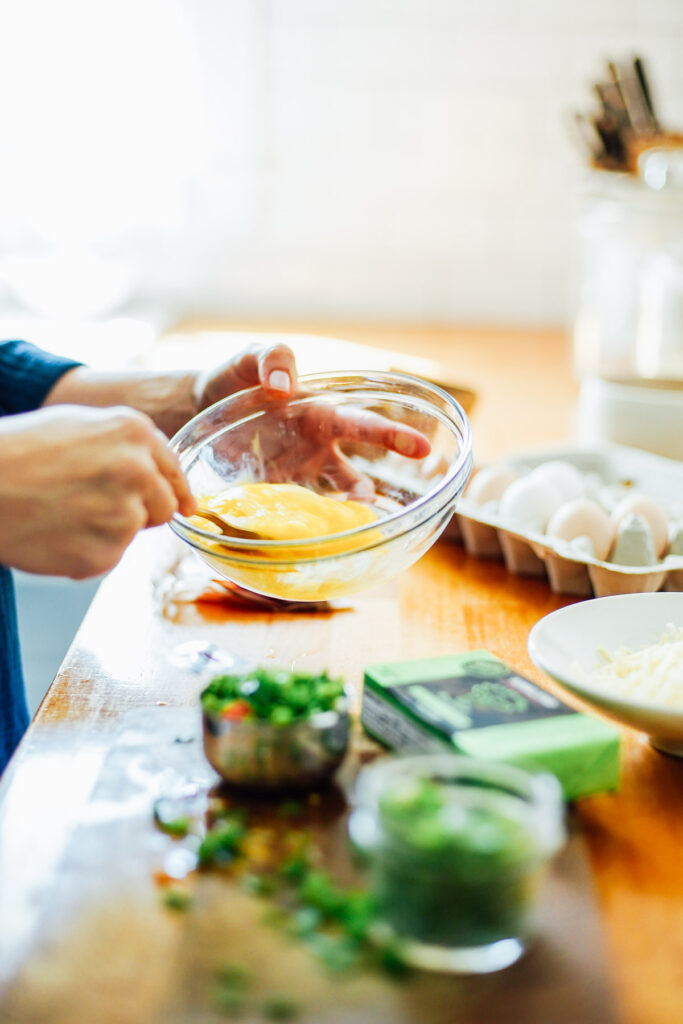
Step 2: Vigorously Whisk Eggs
Vigorously whisk the eggs in the bowl. This will take about 30 seconds. Air pockets will begin to form in the eggs.
Some people add milk to the eggs before whisking, but I don’t find this is necessary. Omelettes are even better without milk.
Step 3: Melt 1 Tablespoon Butter
Using a 9 or 10-inch skillet, melt butter over medium-high heat. There’s no need to use a nonstick skillet.
A stainless steel skillet works best for me, along with plenty of room for the egg mixture to spread in the pan.

Step 4: Pour Whisked Eggs Into The Skillet
Once the butter has melted, reduce the heat to medium-low. Pour the whisked eggs into the skillet.
Allow the eggs to set on the bottom and on the edges for a few seconds (about 5-10 seconds), don’t touch the eggs at this time.
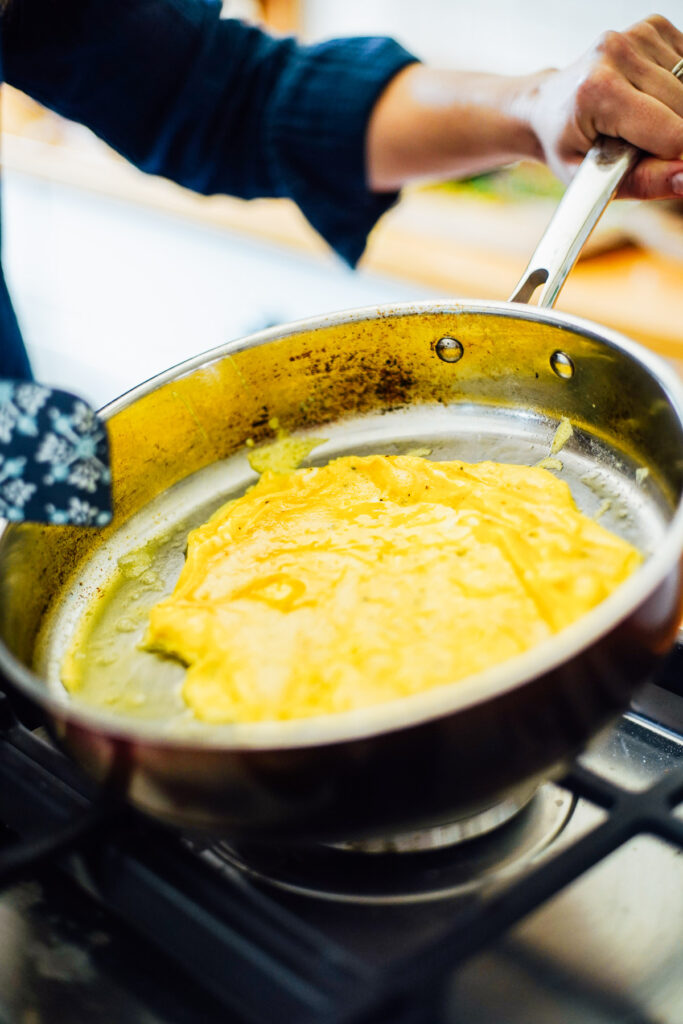
Step 5: Tilt the Skillet, Moving the Egg Mixture in The Skillet
Use a rubber spatula (like this) to push the sides toward the center, just a bit, while tilting the skillet. This creates little pockets for the uncooked eggs to slide into and cook. See the video below for a visual of what this looks like.
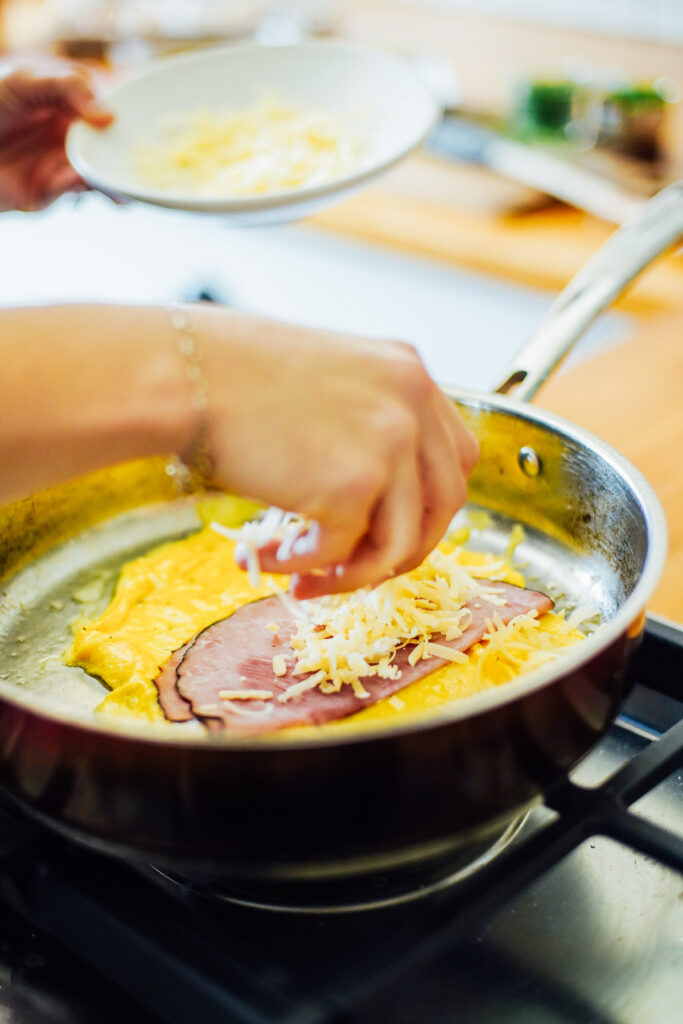
Step 6: Add Cheese (and Ham and/or Veggies)
Add your filling(s) to the center of the omelette: 1 ham slice (if using), shredded or sliced cheese, and finally veggies (if using). Allow the eggs and filling to cook for about 40-60 seconds.
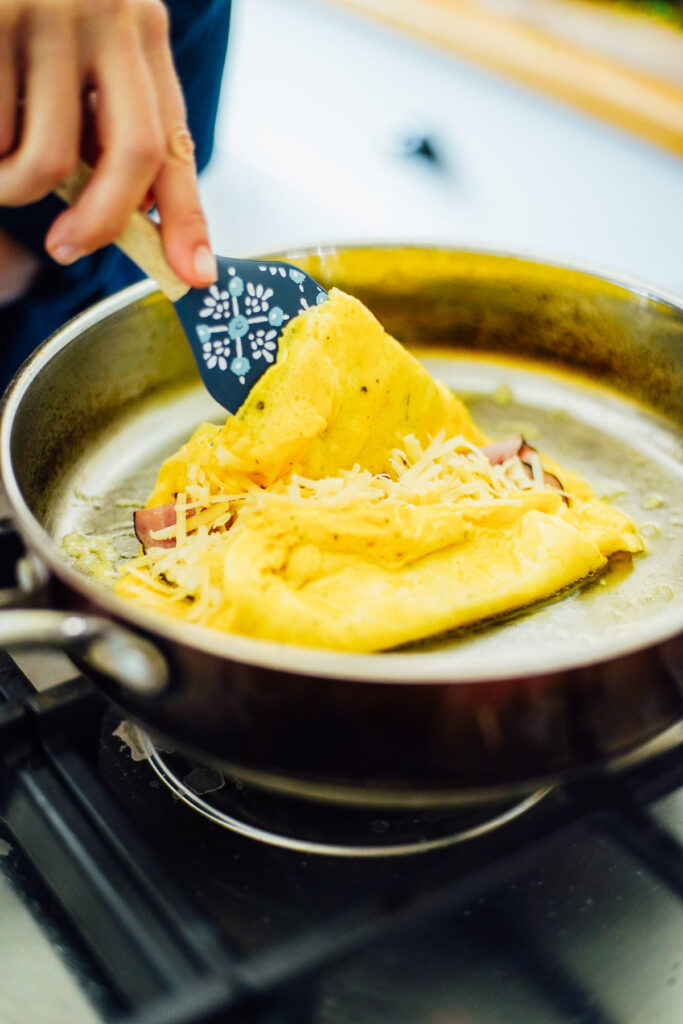
Step 7: Fold the Omelette Sides Over the Filling
Carefully use the rubber spatula to fold the sides of the omelette up and over the filling. If your cheese isn’t fully melted yet, place a lid on the skillet and cook for another minute.
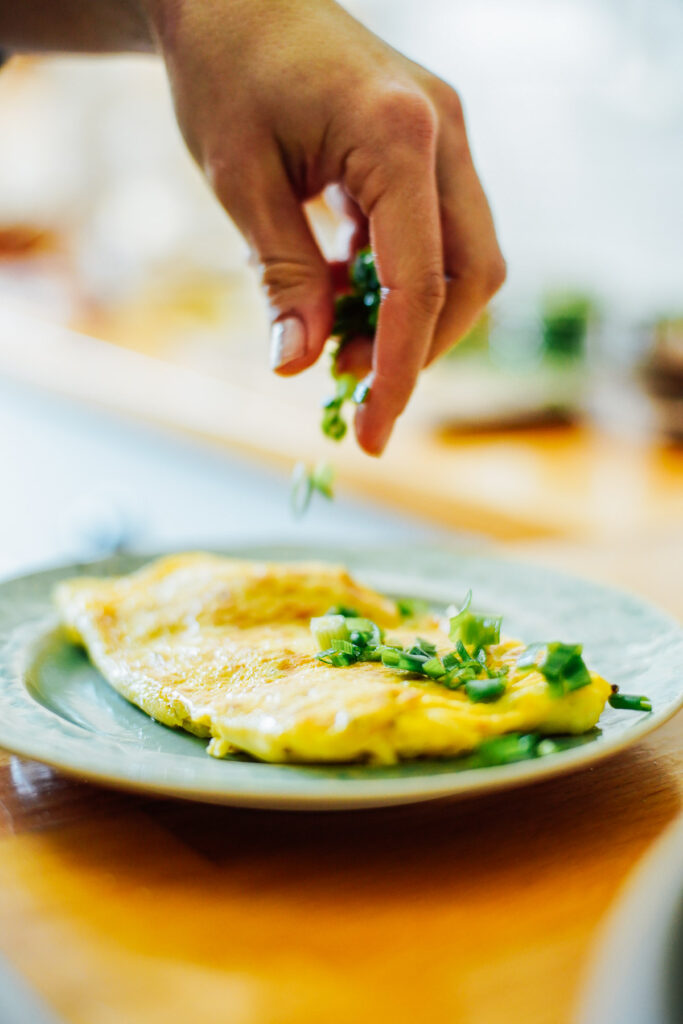
Step 8: Garnish and Serve
Serve as-is, or garnish with extra salt and pepper, chopped green onions, chopped fresh tomatoes or radishes, chopped fresh herbs (like basil, dill, parsley, or chives), chopped radish, a spoonful of salsa, or avocado slices.

What’s the best cheese for an omelette?
I love sharp cheddar cheese for a classic cheese omelette, either shredded from a block or sliced. Traditionally, a French omelette, just cheese and no other fillings, is made with grated gruyère cheese.
Cheese Options:
- Cheddar Cheese (mild or sharp)
- Monterey Jack
- Gruyère
- Swiss
- Parmesan (Parimigiano Reggiano)
- Asiago
- Gorgonzola (crumble if in block form)
- Goat (crumble if in block form)
- Feta (crumble if in block form)
Add between 2 tablespoons to 1/4 cup of shredded or crumbled cheese, or 1-2 slices.
If you’re adding veggies and meat, keep the cheese to about 2 tablespoons (or 1 slice) so you don’t overfill the omelette, making it harder to fold.
Take the Guess Work OUt of meal planning
Free 64 Rotational Meals Ideas Cheat Sheet
Breakfast, lunch, dinner, and snack recipes to rotate week after week. Put healthy meals on auto-pilot.

5 Cooking Tips for Success
1. Use 2-3 Eggs Max
Using 2 eggs is the easiest way to make an omelette. If you’re new to making omelettes, start with 2 eggs and work up to 3 eggs (if desired). 2 eggs = 12 grams of protein (6 grams per egg). Pair the omelette alongside a healthy yogurt bowl, or add ham or another meat to the omelette, for extra protein.
2. Use a 9 or 10-inch Skillet
The larger the skillet, the easier it is to make an omelette. A 9 or 10-inch stainless steel skillet is the perfect size, in my opinion.
If you’re using 1 tablespoon of butter, there’s no need to use a nonstick pan. The butter creates a barrier between the eggs and skillet, keeping the eggs from sticking.
The smaller the pan size, the less room for the eggs to spread, and the fluffier an omelette will be. I personally care more about ease than fluffiness, so I go with a larger skillet. If you want a fluffy omelette, consider using an 8-inch skillet for 2 eggs.
3. Use a Medium-Low Heat
Just like with scrambled eggs, use a medium-low heat. Cooking at a higher heat will cause the eggs to burn quickly and create a dry, eggy-tasting omelette. No, thank you!
4. Don’t Add Too Much Filling
The first time you make this recipe, keep it simple with just cheese and a slice of ham (if desired).
The second time, add veggies as well, if desired. When adding veggies, don’t add too much. About 1/4 cup of veggies, before sautéing, is plenty. Adding too much filling will make it harder to fold the eggs.
5. Avoid Pre-Shredded Cheese
Pre-shredded, bagged cheese is super convenient, but it doesn’t melt as quickly or as well as freshly shredded (or sliced) cheese. I believe this is due to the caking agents. Either buy sliced cheese or shred a block of cheese at home. Plus, it’s much cheaper to buy a block of cheese and it will last for weeks in the fridge!
MY Favorite & Easy
Egg Recipes
- 15 Different Ways to Cook Eggs for Breakfast
- How to Make Fluffy Scrambled Eggs Every Time
- Scrambled Egg Sandwich
- Ham and Cheese Omelette
- Eggs in a Basket
- Sunny Side Up Eggs
- Sheet Pan Breakfast Burritos
- Make-Ahead Breakfast Burritos
- Instant Pot Hardboiled Eggs
- Egg & Sausage Breakfast Casserole
- Make-Ahead Omelet Cups
- Bacon, Vegetable, and Kale Frittata
- Spinach Feta Omelette

Easy Egg Cheese Omelette Recipe (with Veggie & Ham Option)
Equipment
- 1 medium bowl for whisking eggs
- 1 skillet 9-inch or 10-inch skillet is the easiest way to make an omelette (made with 2-3 eggs)
Ingredients
- 2 eggs if you want a heartier breakfast, you can increase to 3 eggs
- 1/4 cup shredded cheddar cheese or 1-2 slices of cheese, anywhere from 2 tablespoons-1/4 cup of cheese is good
- pinch salt
- pinch pepper
Other Filling Options (choose one or multiple additions):
- 1 slice black forest ham or your favorite ham
- 1/2 cup fresh baby spinach leaves or up to 1 cup
- 3-4 cherry tomatoes
- 1-2 tablespoons chopped green onions or red onion or yellow onion
- 2 tablespoons chopped red bell pepper
- 1/4 cup sliced mushrooms like cremini mushrooms
Instructions
Prep Veggies (if using):
- If you want to add veggies for a filling, prep the veggies first. Chop/dice the veggies. You can choose just one veggie from the list, or mix and match to create a veggie-filled cheese omelette.
- Add 1 teaspoon oil (extra virgin olive oil or avocado oil) to a skillet, over medium-high heat. Once hot, add the veggies, sprinkle with a pinch of salt and cook for 2-3 minutes to soften. Remove to a plate and set aside.
- Wipe out the skillet and reuse to make the omelette.
Make the Omelette:
- Crack 2 eggs in a medium-size bowl. Add a pinch or two of salt and a couple turns of the pepper grinder (a pinch or two of ground pepper).
- Vigorously whisk the eggs until air bubbles form (about 30 seconds).
- Add 1 tablespoon butter to the skillet. Melt the butter over medium-high heat.
- Once melted, reduce to medium-low heat and pour in the eggs.
- Allow the eggs to set at the bottom and on the edges of the skillet for a few seconds (about 10 seconds). Don't touch the eggs at this time.
- Use a rubber spatula to push the sides of the eggs toward the center, just a bit, while tilting the skillet. This creates a little pocket for uncooked egg to slide into and cook. See the video below for this technique.
- Repeat until the eggs are set, but still appear soft (and glossy/wet) on top. The eggs will continue to cook in the next step.
- Add filling to the center of the omelette: 1 ham slice (if using, or crumbled bacon or cooked sausage crumbles), cheese, and finally cooked veggies. Allow the eggs and filling to cook for about 30 more seconds.
- Carefully use your rubber spatula to fold two sides of the omelette up and over the filling. If your cheese isn't fully melted yet, place a lid on the skillet and cook for another 30-60 seconds.
- Slide the spatula under the omelette to ensure it's loose (not sticking to the pan).
- Remove the skillet from the heat and slide the omelette from the skillet onto a plate, with the fold line underneath the omelette (for a pretty presentation).
Serve and Garnish:
- Serve as-is, or garnish with extra salt and pepper, chopped green onions, chopped fresh tomatoes or radishes, chopped fresh herbs (like basil, dill, parsley, or chives), chopped radish, a spoonful of salsa, or avocado slices.
Video
Notes
Nutrition
Take the Guess Work OUt of meal planning
Free 64 Rotational Meals Ideas Cheat Sheet
Breakfast, lunch, dinner, and snack recipes to rotate week after week. Put healthy meals on auto-pilot.

FAQs
What to Serve With This Recipe
This is a great protein-rich breakfast, lunch, or dinner. Serve this recipe on its own or with a breakfast side. Here are a few of my favorite side dishes:
- Toast: Toast and eggs are a classic. I love sourdough toast.
- Overnight Oats: Make chocolate peanut butter oats or vanilla oats the night before. Then serve with this recipe for a protein-rich meal.
- Avocado Toast: Top a slice of toast with mashed avocado and a squeeze of lemon juice and salt.
- Avocado Slices: For a healthy fat, add half an avocado (sliced) with lemon and salt sprinkled on top. Enjoy each bite of the omelette with a slice of avocado.
- Fruit: Serve alongside your favorite berries or seasonal fruit.
- Banana Bread: A classic, make it advance and enjoy all week for breakfast: almond flour banana bread, almond flour banana muffins, sourdough muffins, or maple-sweetened muffins.
- Yogurt Bowl: Serve alongside a nutrient-dense yogurt bowl.
- Bacon or Sausage Patties: Serve with oven-baked bacon or cooked sausage patties.
- Potatoes: Roast potatoes in advance and reheat for an easy breakfast side.
- Pancakes or Waffles: Serve alongside sheet pan pancakes or almond-oat pancakes. Or, serve with almond flour waffles or einkorn waffles.
- Roasted Tomatoes: We visited France a few years ago and our hotel served eggs and roasted tomatoes each morning (among other things). Give it a try during the summer when fresh tomatoes are in season. Make the tomatoes in advance and warm them up in a skillet.
- Tropical Mango Pineapple Smoothie: A great source of healthy carbs, paired with this protein-rich breakfast.


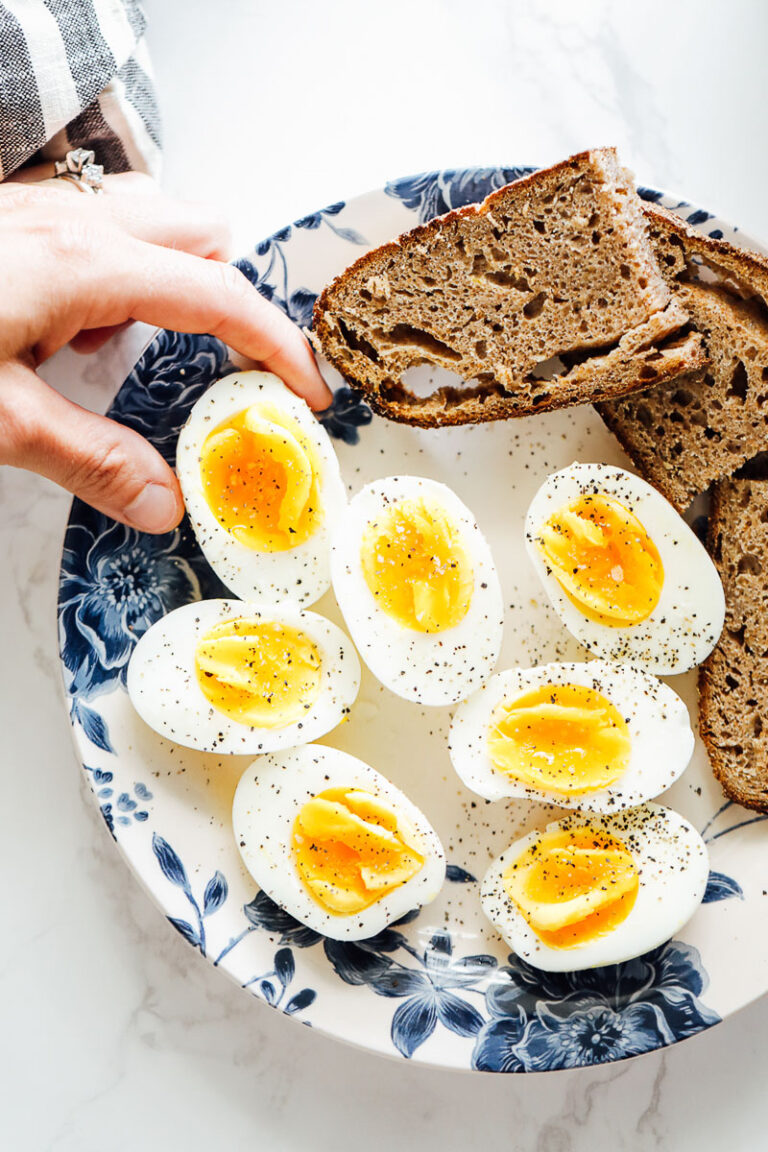
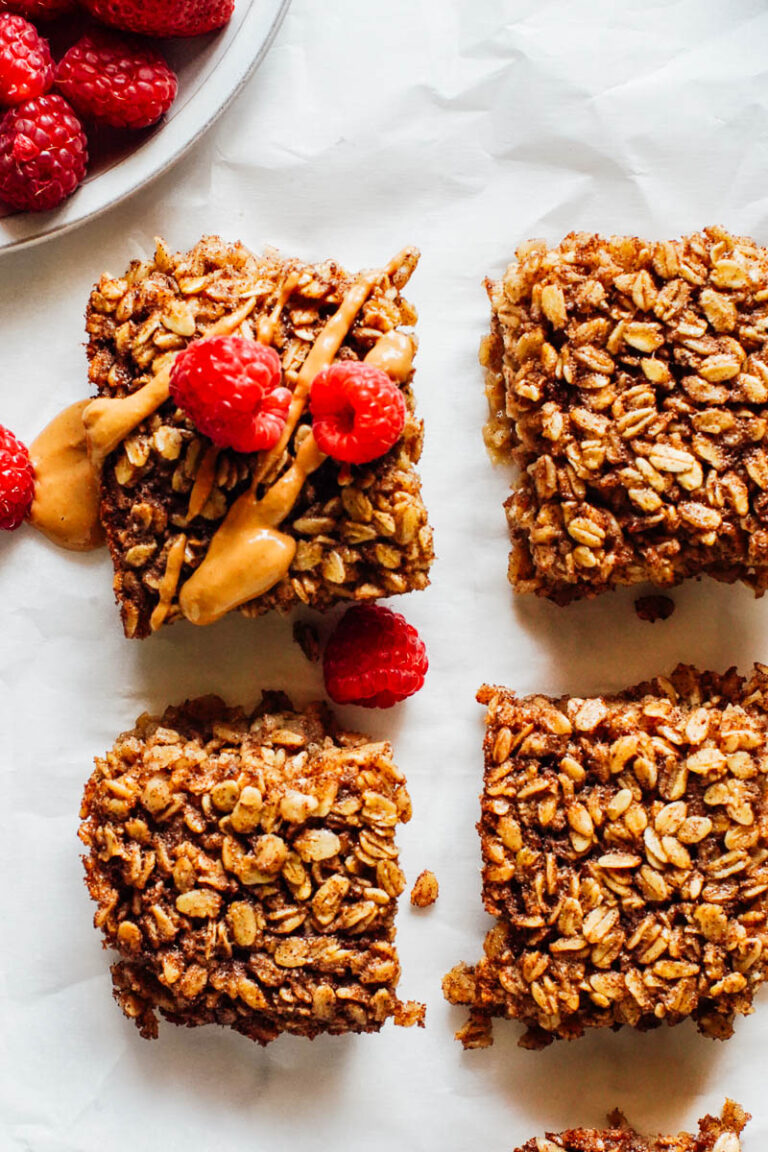
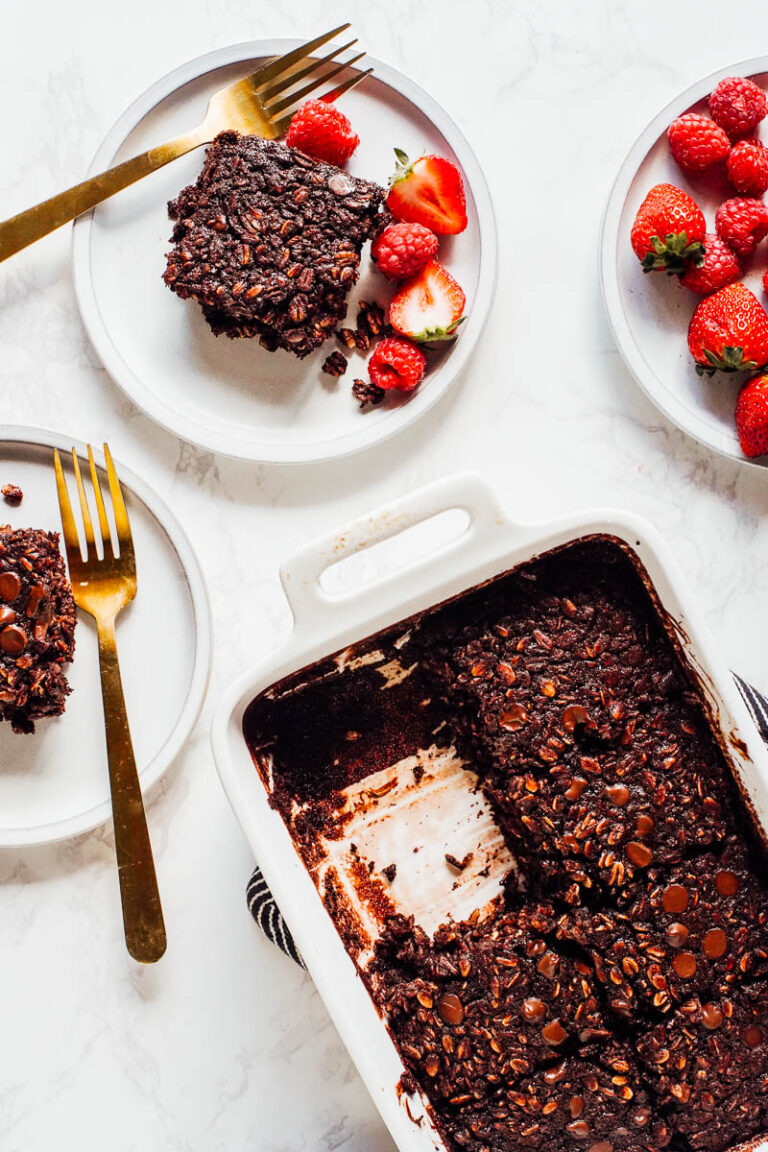
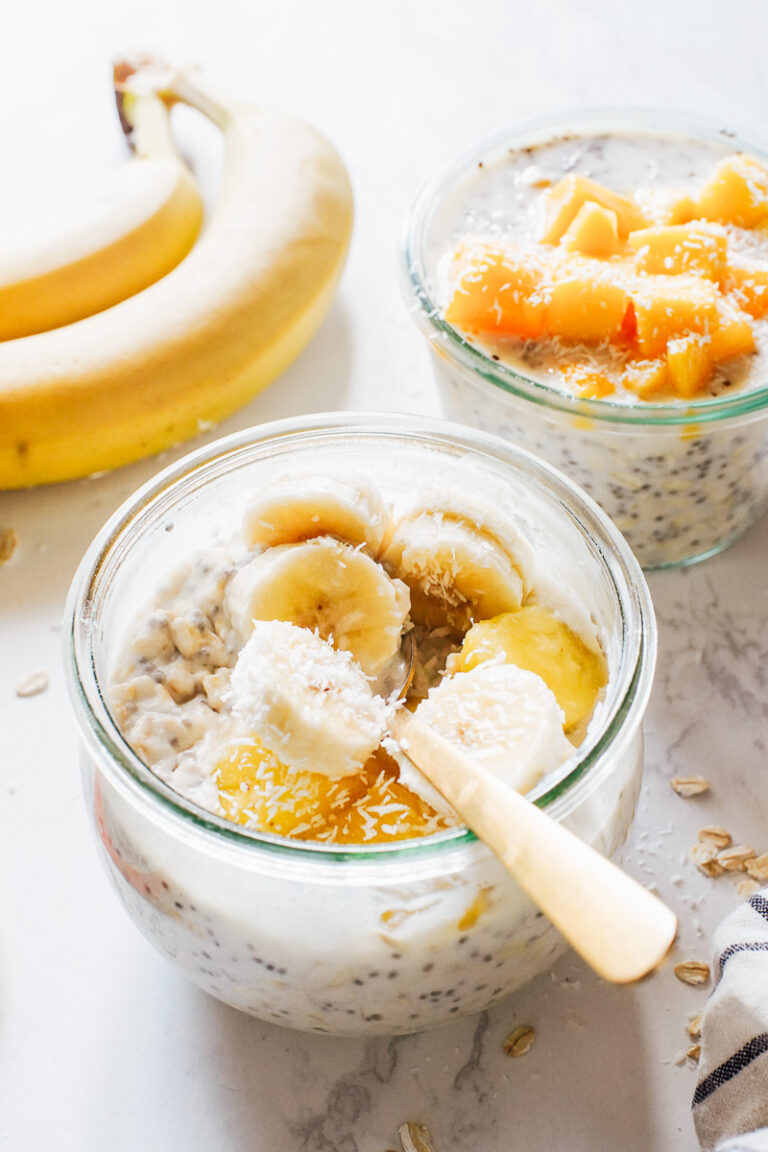

We make a cheese omelette every week for breakfast. My favorite combo is green onions, tomatoes, ham, and cheese. Let me know your favorite fillings!